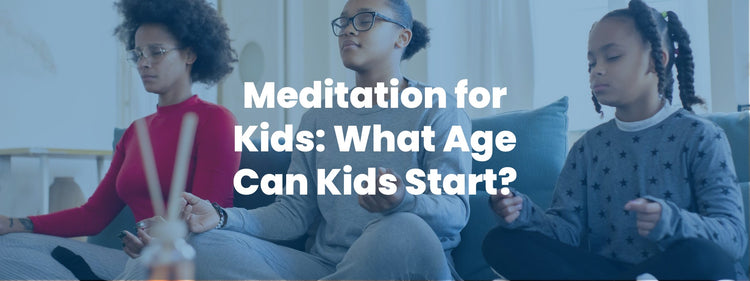3 Tips to Get Your Kids to Meditate - Meditation For Kids Guide

Best Meditation For Kids Guide
Learning to meditate is one of the greatest things we can do for ourselves. Getting into a state of calm is one of the most useful assets we as humans can possess! The powers of meditation and relaxation have endless benefits, and can change a person’s entire approach to life in some cases.That's why we have created a full guide on Meditation For Kids, to encourage the younger age group to develop a positive and calm mindset.
Meditation has enormous benefits not only for adults, but also for children. Teaching kids how to calm themselves and get to a state of serenity can be so helpful in creating a more relaxing, peaceful household that can change your entire family dynamic for the better. Our meditation for kids strategy involves helping your child relax through using mindfulness and breathing exercises, as we want to encourage you as a parent to promote regular use of these techniques.
BENEFITS OF TEACHING YOUR KIDS HOW TO MEDITATE
- Helps increase their well-being
- Boost their mood & self-esteem
- Calms and relieves stress for kids
- Teaches them how to respond to stress signals
- Improves sleep
- Reduces anxiety
You may be wondering, how can I do this? There are so many different ways to bring meditation into your children’s lives, but here are three interesting ways to approach how to teach and encourage meditation to your children, and how to get them to best absorb it.
Use your imagination!
Remember when you were a kid how powerful your imagination was? If you have a young child, it’s very likely their imagination is just as vivid as yours was. Learning by encouraging creative thinking is one of the most effective ways to get a child to remember a technique.
Let’s say that you’re practicing lion’s breath with your child. The technique already involves breathing out and “roaring” like a lion, so why not ask your child what their lion looks like? Is it male or female? If it’s a male, is its mane thick and bushy? Is the lion large or small? Maybe you’re trying flower and candle breath for the first time. Ask your child what color their flower is, or ask them to describe their candle. How does their flower smell?
Using your imagination will make breathing exercises fun and memorable for your child. If they’re enjoying what they’re learning, it’s sure to stick with them!
Practice breathing in the green.
Green is a softer color that represents growth, positivity, and calm. It can also symbolize that things are going just like they should (think of a green traffic light). When we say to do something in the green, it means to do something during a time of stability and calm.
If you’re the parent of a young child, you know that it can be challenging to keep your child in the green. Children often revert to more of a red state, which often means a place of negative and unproductive behavior. While in a red state, emotions are often running high, so their level of focus will be low.
A breathing exercise while in the red can really help your child. However, when your kids practice meditative breathing, it’s important to make sure they’re in the green, or in that tranquil state. Here, they’ll be able to slow down and absorb the breathing techniques and the calming ideas behind them. Over time, this will make them more receptive to the meditation in general, and if they get good at calming themselves through breathing when everything is a-ok, they’ll be more likely to have a positive association.
So, if your child is practicing their breathing, just make sure they are in the green. Think of it like this: green means go!
Make meditation a fun and interactive activity!
Children respond best to anything when they are engaged, focused, and having fun! If you’re trying to make breathing and meditation a normal part of their lives, help give them an opportunity to make it fun and interactive.
Want to help make your child’s quest for relaxation more interactive? Introduce a breathing ball or a meditation pillow. Are you helping them practice lion’s breath? Maybe bring along your child’s favorite stuffed lion (or introduce a new one) to help with the task at hand!
You can even teach your child buddy breathing with their siblings, their friends, or even other members of the family. That opportunity to be interactive and bond with other people of any age can really go a long way in motivating your kids to practice and perfect their meditation techniques.
Simply put, when it comes to helping your child develop a habit of meditation through breathing or any other technique, it’s always better when it’s interactive!
To summarize: use your imagination. Practice in the green. Make meditation a fun and interactive activity. Try out some of the tips above - we’re sure you’ll be amazed with how well this works!



